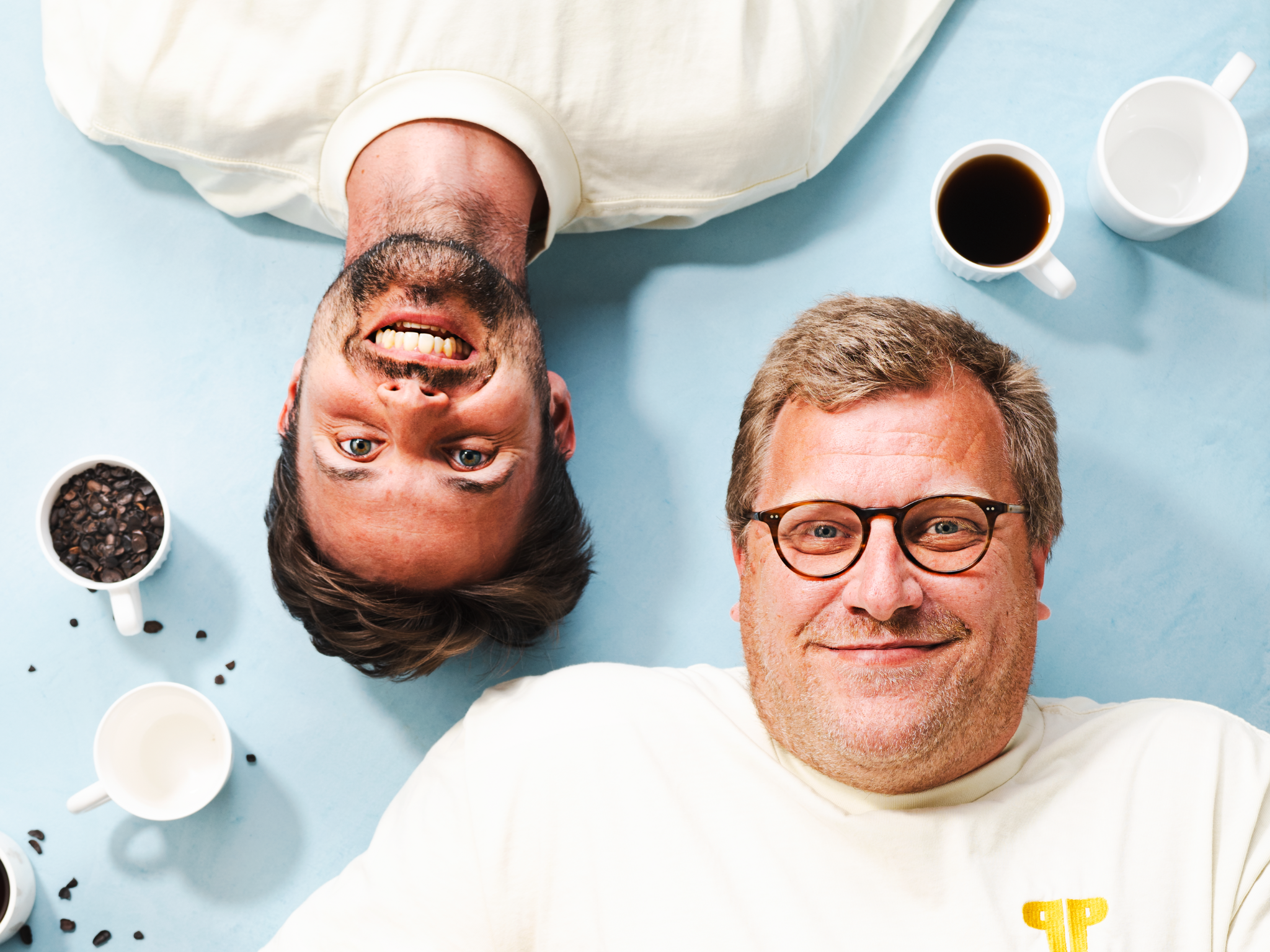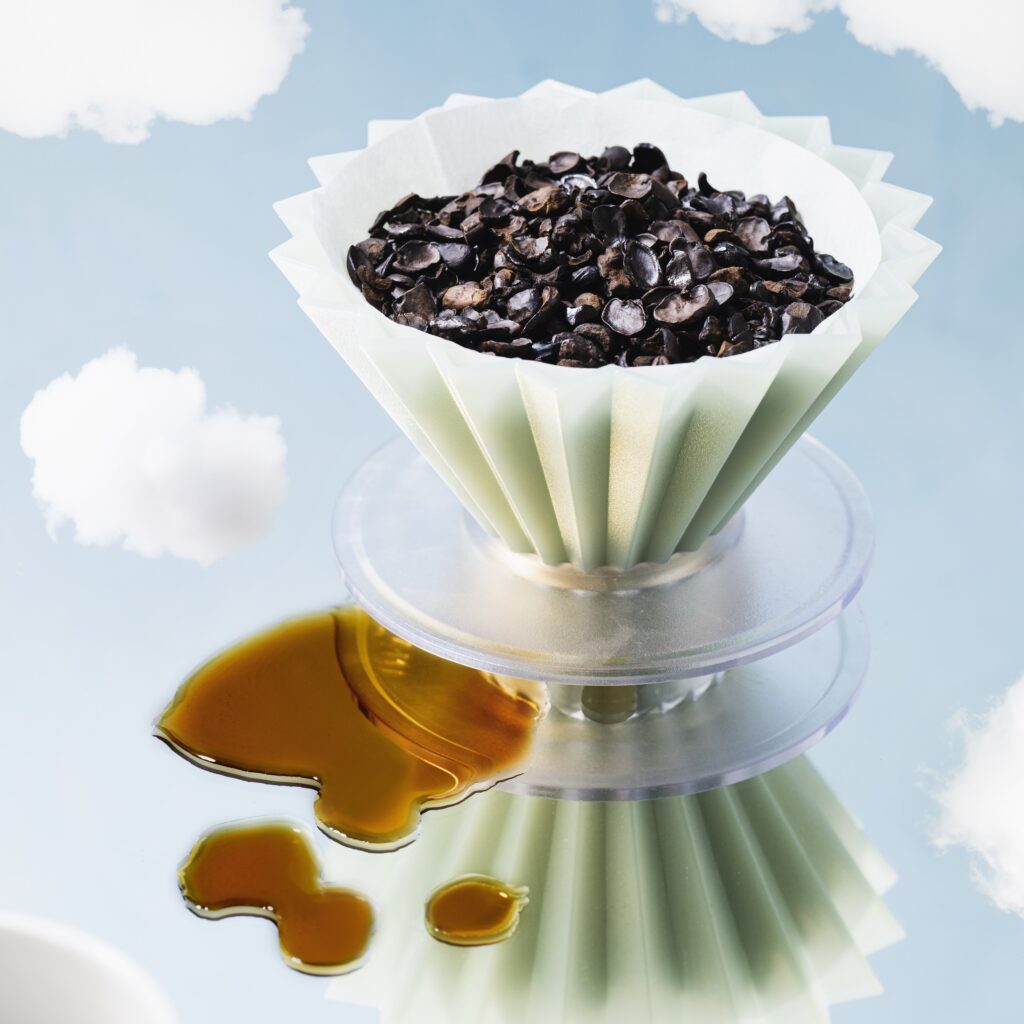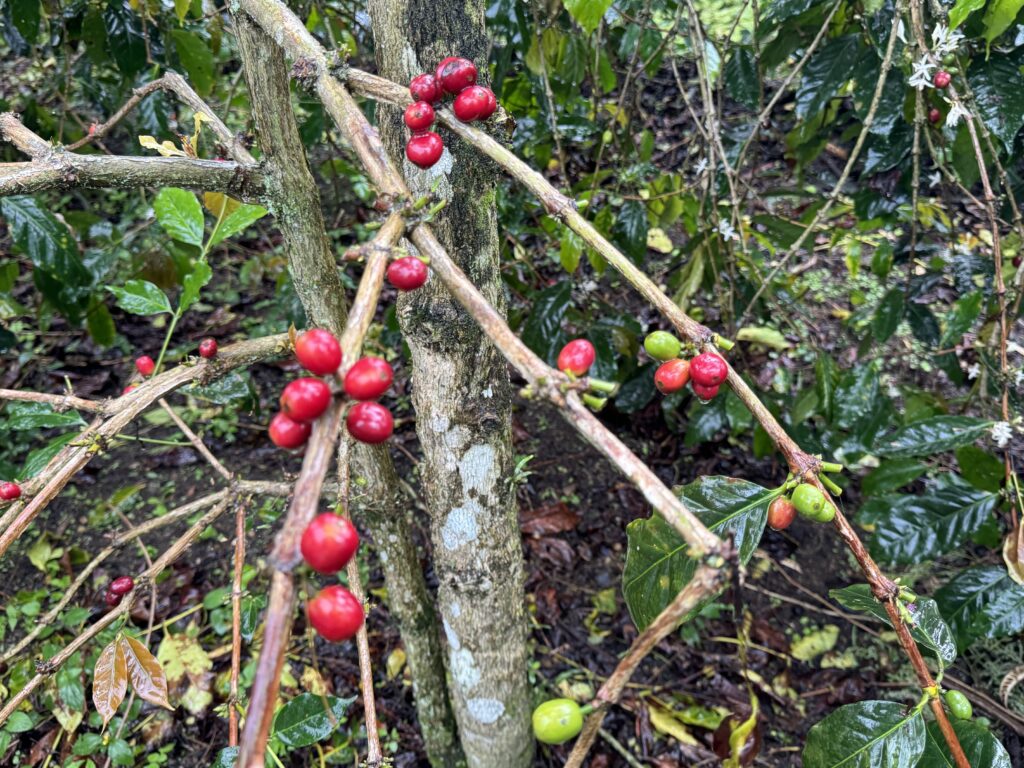
Belgian startup Koppie, which makes a single-ingredient coffee alternative using legumes, has emerged from stealth with a pre-seed funding round.
What if you could brew coffee with a different bean? Say, chickpeas? Or something more native to your region?
It’s an idea that spurred former Danone marketer Daan Raemdonck and bioscience engineer Pascal Mertens into action.
They are the co-founders of Koppie, a three-year-old Belgian startup that uses fermentation to give pulses coffee-like aromas and flavours. It has just come out of stealth mode with a pre-seed funding round led by Nucleus Capital, with participation from Mudcake, Rockstart, and several angel investors.
While the investment sum is under wraps, Raemdonck tells Green Queen that the amount was what “we wanted and feel we needed to reach our business goals”. Said goals include further enhancing the product, scaling up to commercial volumes, and landing its first customers.
The capital injection adds to the €400,000 it has secured in grants from the Flemish Institute of Innovation & Entrepreneurship. Moreover, the startup was selected as part of the EU-backed EIT Food Accelerator Network earlier this year.

Why put chickpeas instead of single-origin coffee beans in your V60, you might be wondering? Well, your regular coffee bean soon may not be as regular anymore. Climate change is threatening the crop, with 60% of coffee species endangered and the area suitable for cultivating arabica shrinking.
Crop failures and shortages pushed up arabica prices by 80% last year, with wholesale prices reaching a nearly 50-year high. That has continued in 2025 – this February, coffee futures in New York hit an all-time high of $4.34 per pound.
“With yields under pressure, and prices rising, we believe novel and hybrid solutions will be essential for coffee companies looking to navigate volatile supply chains,” says Raemdonck.
How Koppie is using legumes and fermentation to futureproof coffee
A host of companies are now working to develop alternatives to coffee, from Atomo, Minus Coffee and Voyage Foods in the US to Northern Wonder in the Netherlands and Prefer in Singapore. These players use a variety of ingredients to replicate the flavour of coffee.
Koppie, however, offers a single-ingredient solution, turning locally sourced legumes into “Koppie beans” that can be ground and brewed the same way as conventional coffee. Consumer panels and specialists have validated the taste experience, with sensory coffee professionals (called Q Graders) giving it a 70/100 score, on par with commodity coffee.
“From the start, we set out to create a ‘coffee bean’, believing this would help industry and consumer adoption: just swap out coffee beans for our Koppie bean, and use it like you’re used to,” explains Raemdonck. “This, of course, significantly limited the base product options and automatically made it a single-ingredient play.”
He adds: “We then conducted a broad screening, based on numerous elements: sustainability, local harvests, known allergens, product size, as well as price. The next step was trialling it with our technology in mind, and validating the final product with taste experts. This is how we arrived at pulses and our current prototypes.
“The beauty is that our technology does the heavy lifting. Hence, we can review the above criteria depending on the region we’d be operating in.”

While the details of the fermentation tech are patent-pending and thus under wraps, Mertens explains that the key lies in adjusting the pulses to such a degree that the roasting can create coffee-like flavours without any off-notes.
“The great element here is that it also allows us to be flexible depending on what flavour we want to create. Tuning the technology allows customisation for potential clients to use in their blends,” he notes.
Koppie hasn’t disclosed what microbial strain it’s using to ferment the pulses. “However, I can confirm that we’re not novel food and don’t require specific regulatory approval beyond standard food safety measurements and guarantees,” says Mertens.
But wait, what about the coffee farmers?
A common criticism of beanless coffee is the impact on farmers – the industry has 125 million people whose livelihoods depend on the crop.
“Ultimately, the value of coffee is not to produce a liquid that tastes like coffee, but what happens from the tree all the way down to the cup and what happens in between,” Elliot Bentzen, director of trade and traffic at Starbucks Coffee, told Green Queen last year. “So I don’t know if I’d ever be enamoured or thrilled or curious enough to be like: ‘Okay, some scientists boiled it down to a cup of coffee!’”
However, Bentzen acknowledged that the industry will need to adapt in the face of climate change. Alternatives like Koppie’s could be a key part of the solution.
“Farmer compensation is a massive and frankly underexposed topic. However, calling out alt-coffee as a driver feels like a red herring argument,” says Raemdonck. “We also believe the supply-demand imbalance which is coming is going to be so significant. We’re going to need all the solutions we can find to save a daily ritual for a very significant part of the global population.
“There’s a systemic issue within our food system globally, and one of those strange elements is how little farmers are benefiting from this beautiful product we all love,” notes Raemdonck, pointing to a 2021 Columbia University study that found coffee farmers earn above the poverty grade in only two of the top 10 producers, Brazil and Vietnam.

“Despite the unprecedented green coffee price points, your average farmer isn’t benefitting. This is not a ‘future issue’ – farmers not being compensated fairly is a ‘today’ issue,” he contends.
The impacts of climate change will be keenly felt by smallholders, who represent 60% of the global coffee supply. “It has so many implications for them. For sure, help will be needed to adapt and potentially diversify, simply in order to sustain their livelihoods,” he says.
Meanwhile, global demand for coffee is increasing by 2% every year. Given the supply issues, this will create a major gap, which “even in our wildest business plans, we’ll not be able to offset”. “We need more solutions to help save our ritual, not less. There will be plenty of demand to fill for people with good-tasting products, at a fair price,” says Raemdonck.
Working with the industry to produce hybrid coffee
Koppie is making a point to highlight that it is not trying to replace coffee; instead he is working with the industry to futureproof it. That’s why it is initially focusing on a B2B model, working with roasters to develop hybrid blends that combine coffee beans with its legume-based replicas.
“We’re seeing significant traction by coffee companies and manufacturers of coffee-derived products, who understand that the future will hold significant supply challenges. We’ve also found that our product, when blended with coffee, not only fits perfectly, but has the potential to uplift and improve the final product due to the slightly sweeter, less bitter profile,” says Raemdonck.
“The vast majority of these companies are looking to blend, as this makes consumer adoption easier and is closer to their own core and capabilities, just like we’re seeing happening in meat and dairy at the moment,” he adds. “This doesn’t mean we wouldn’t want to sell under our own brand at some point in time. However, that’s not the case currently.”

Its debut product is likely to come from either chickpeas or yellow peas. “We’re looking to be ready for commercial volumes by end of year, hoping to conduct a market test by the middle of next year,” he says. “Of course, that depends on the timeline of our first customers.”
In fact, Koppie is aiming to reach commercial scale by the end of 2025, which will enable one or two relevant in-market tests.
“We believe we can be cost-competitive to coffee, now and in the future,” reveals Mertens. “Of course, time will tell what happens to the coffee price in the coming months and years. That’s perhaps the key here: we can guarantee a good, stable product at stable prices, something elusive in coffee at the moment.”
Coffee is a carbon-intensive product, generating more emissions per kg than poultry and pig meat combined. Plus, it takes 140 litres of water to produce enough beans for the average cup of coffee. Koppie’s alternative, however, is estimated to have a 70% lower carbon footprint, and use 60% less land and 90% less water.
This opens up the potential for innovative coffee products tailored to specific audiences. “Think lighter roasts, or blends which are naturally lower in caffeine,” says Raemdonck. “We’re taking a forward-looking category vision to secure the future of a beautiful daily ritual for many.”
The post Legume is the New Coffee: Meet the Belgian Startup Making Your Latte Without the Bean appeared first on Green Queen.
This post was originally published on Green Queen.